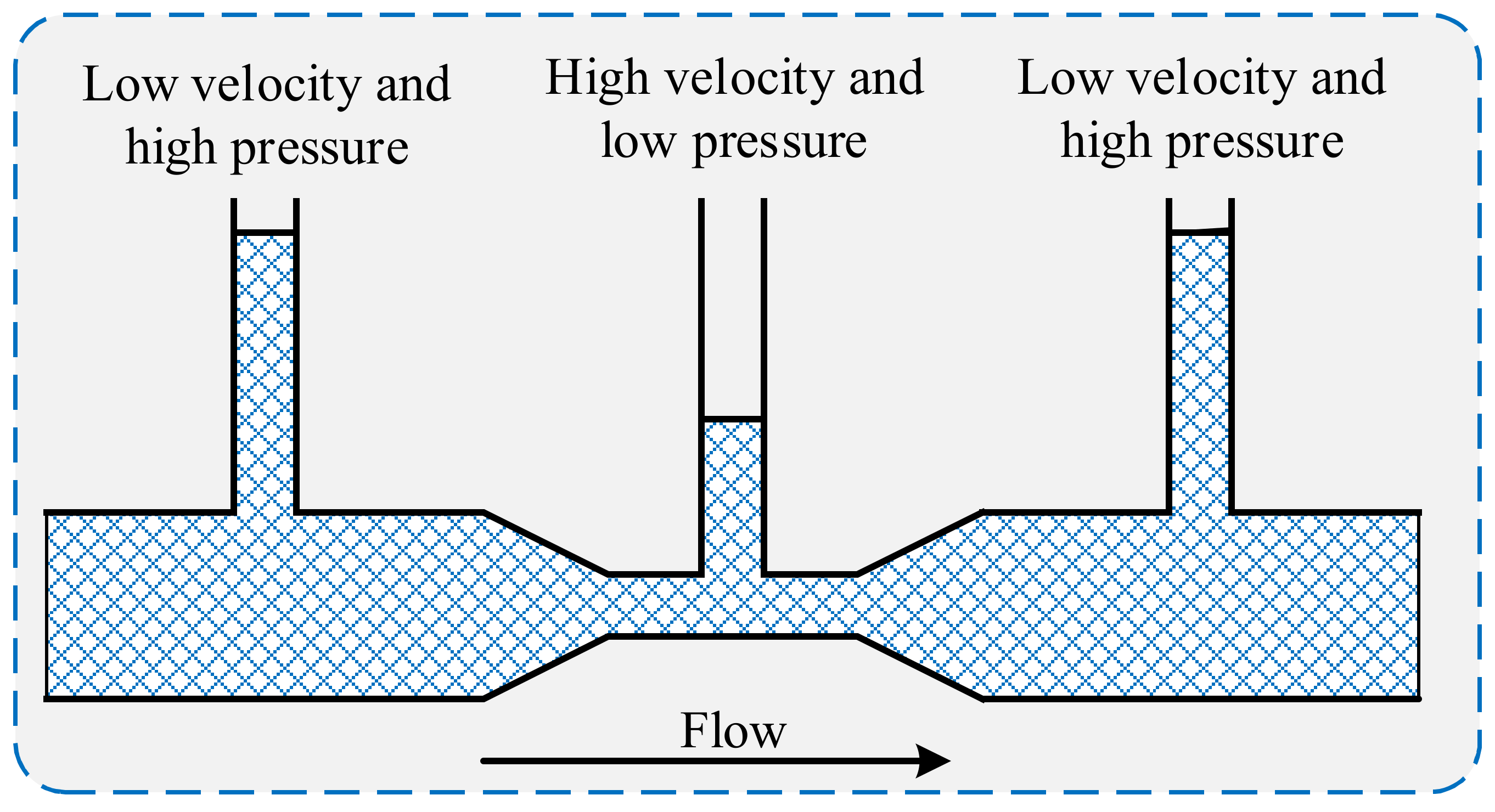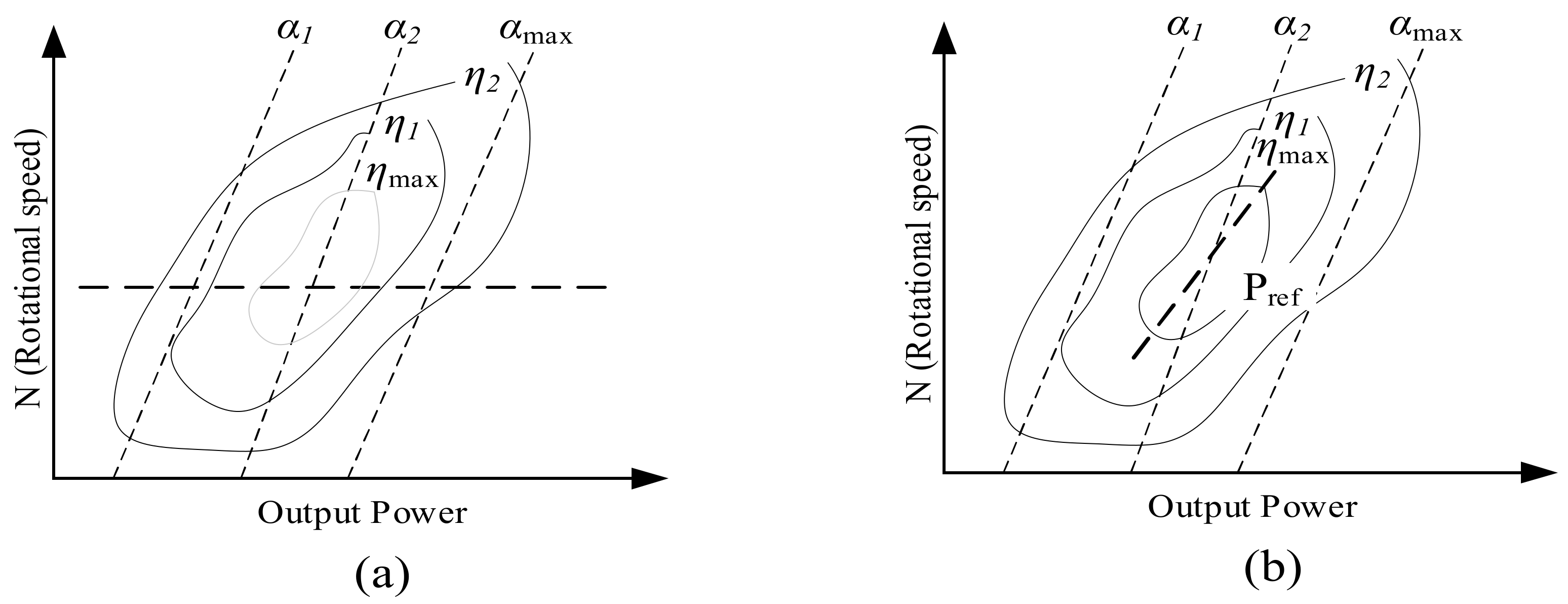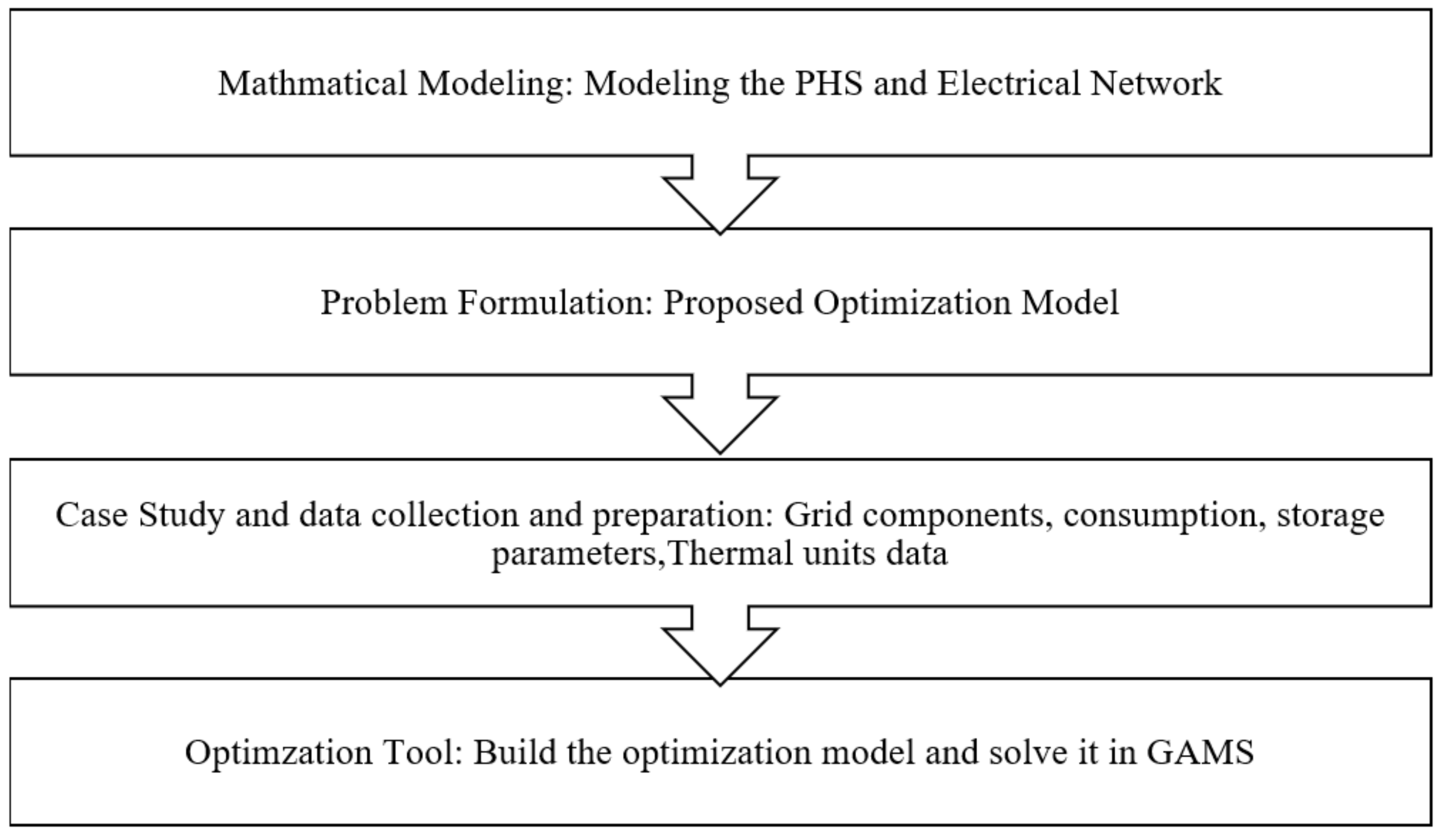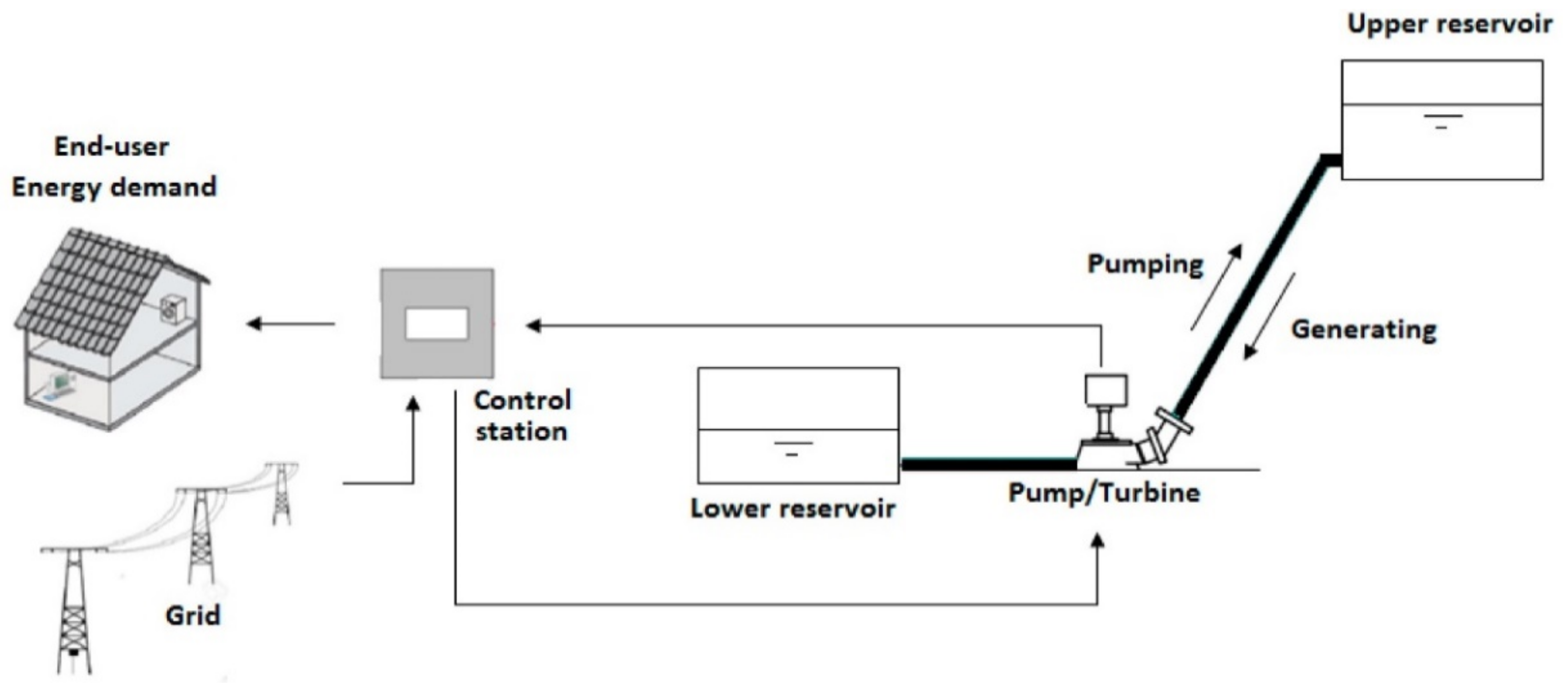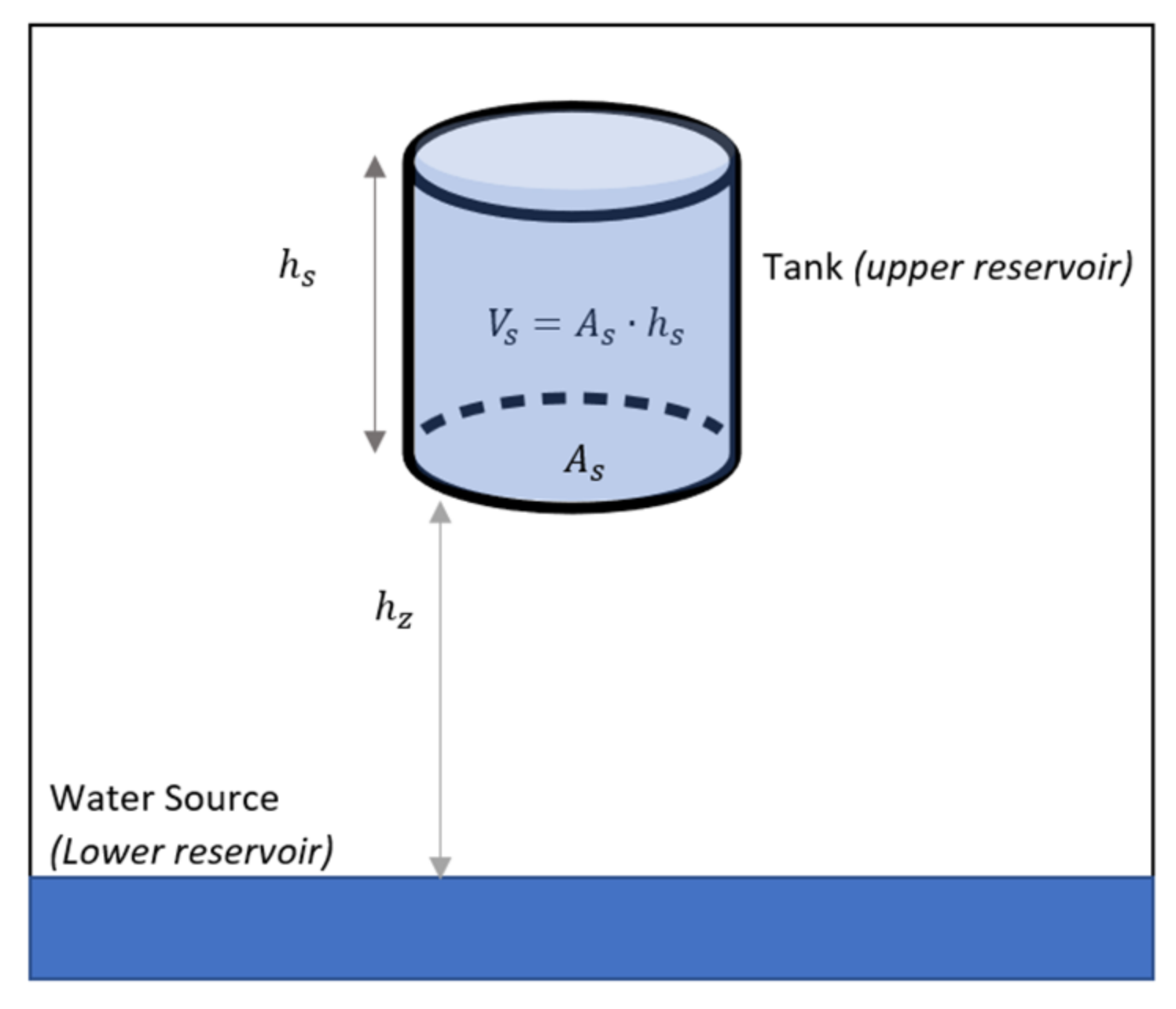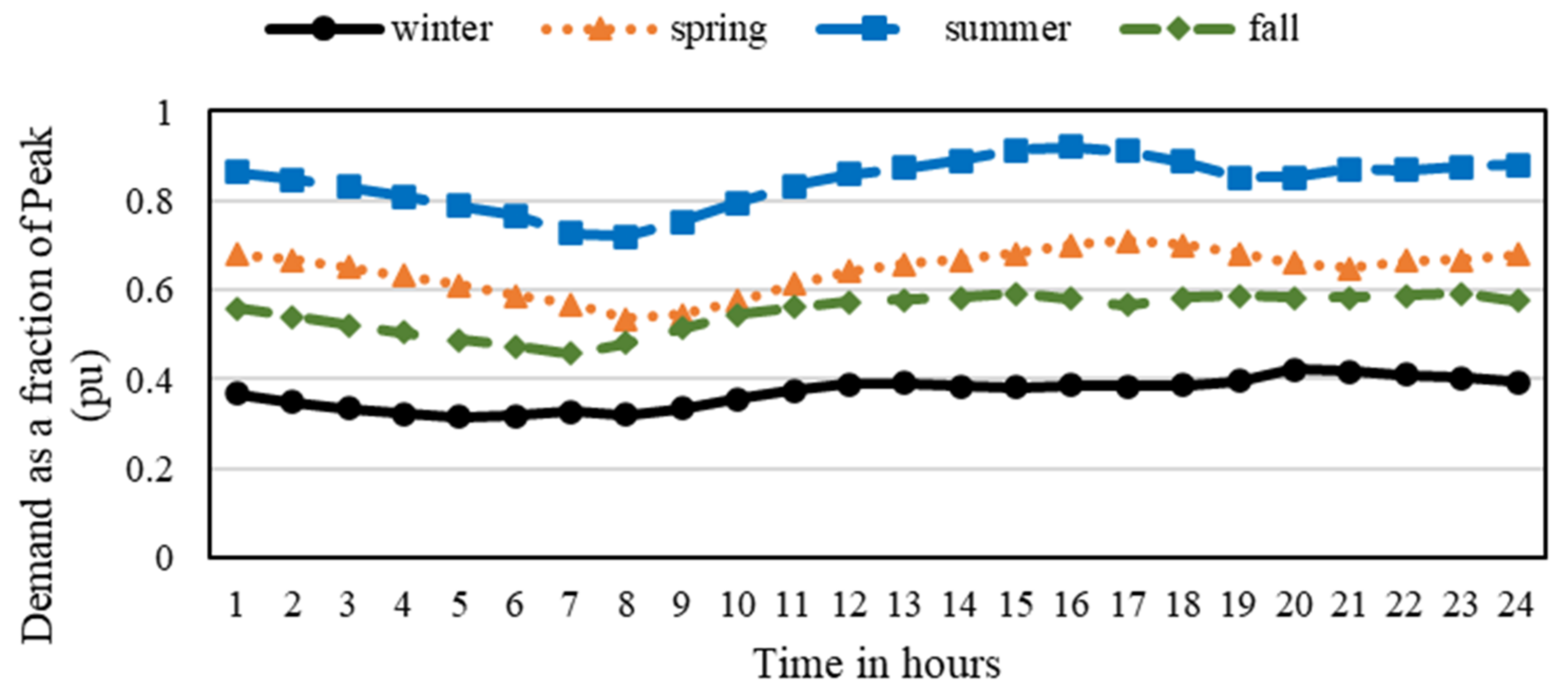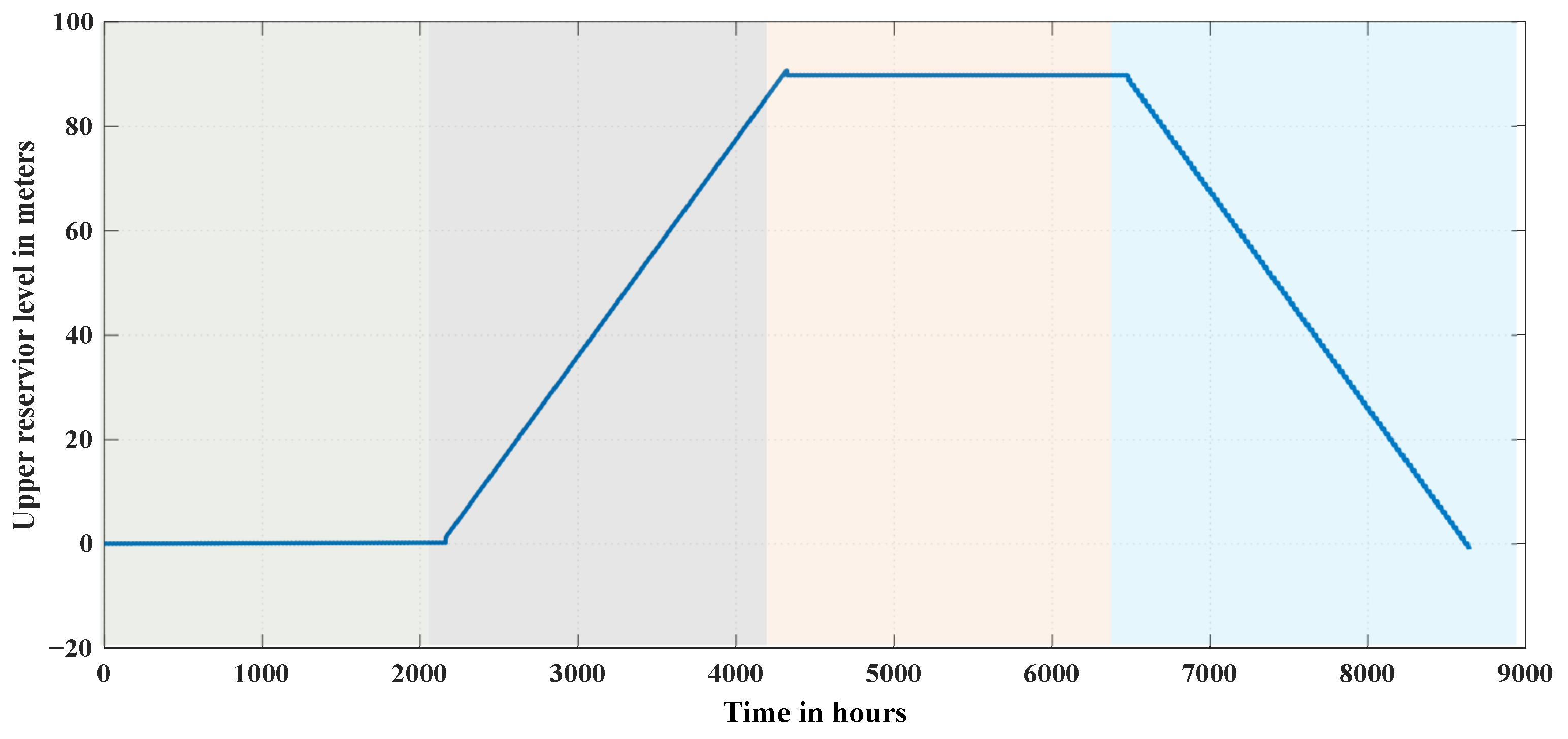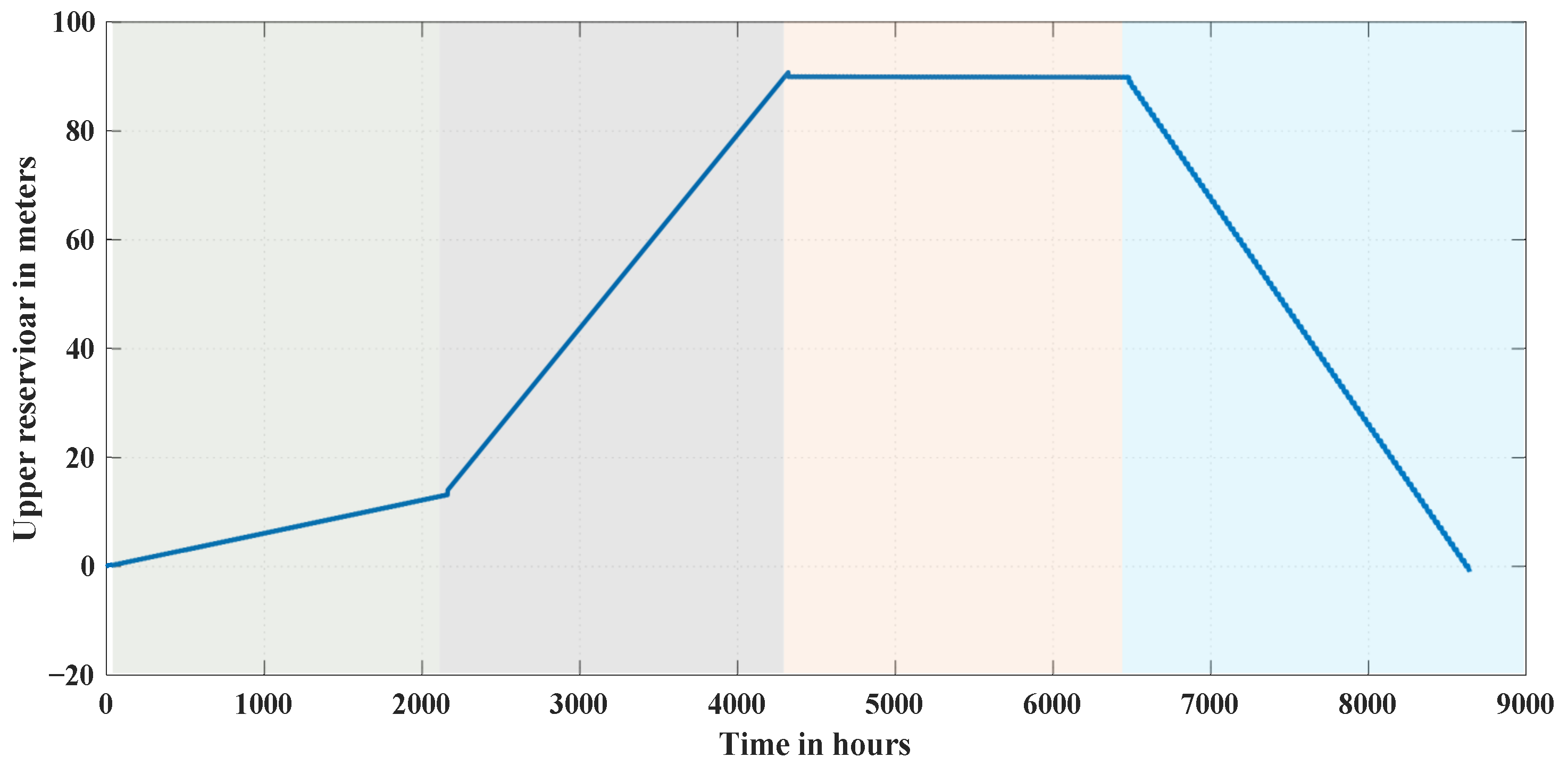1. Introduction
Load changes during the day and meeting-time-dependent demand, particularly during peak hours, are a significant challenge for energy suppliers. Further, peak demand is growing daily because of the increased end users. Hence, the continuous peak load growth raises the marginal cost of supply. As a result, utilities are concerned about producing power to control or cover peak loads. Power facilities, such as gas power plants, typically cover peak power demand. Diesel generators are also used for supplying isolated power systems during times of peak demand. However, the operating and maintenance (O&M) costs for these kinds of power plants are high. Old and inefficient plants are also used to meet the peak demand because peaking or standby plants only operate during peak load hours. These plants have a low initial cost, but their O&M costs are high. Generally, types of power plants, according to our purpose, can be classified into (1) baseload power plants, (2) peaking power plants, and (3) intermediate load plants. The baseload power plants are power plants that have high capital costs but relatively cheap operating costs, such as large coal-fired plants. Moreover, they are assigned to supply the baseload of the power system; they are also called “must-run power plants.” On the other hand, peaking power plants are inexpensive to build but expensive to operate (e.g., gas power plants). These power plants are turned on only during periods of highest demand and have a relatively faster response than baseload power plants. Furthermore, the intermediate-load plants have characteristics that are somewhere in between and can be quickly ramped up and down.
An increasing amount of research is being conducted on peak shaving, specifically considering the aforementioned power plants, and it has become a critically important and actively researched area. Further, some countries, such as EU member states and North America, have already deployed this strategy. Peak load shaving is a process of making the load curve flatten by reducing the peak load and shifting it to times of lower demand. There are different strategies through which peak load shaving can be achieved, such as (1) integration of energy storage systems (ESS), (2) integration of electric vehicles (EV) into the grid, and (3) demand side management (DSM). Among these strategies for peak shaving, a seasonal or annual demand curve flattening cannot be achieved through demand side management or integration of EV alone since the main contribution to peak demand is air conditioning, and this type of load cannot be shifted as it is related to environmental factors (e.g., UAE). Further, EV integration is not enough due to the high seasonal variation. Therefore, this necessitates the need for long-term and large-capacity ESS to establish a flexible power grid that can respond to seasonal demand fluctuations [
1].
There are various ESSs with different capabilities and characteristics. The available ESSs technologies are classified under four main categories; mechanical, chemical, electrochemical, and electrical storage systems [
2,
3,
4,
5,
6]. Understanding different ESSs characteristics is necessary to evaluate their suitability for different applications. However, a detailed assessment of ESSs is beyond the objective of the research. Instead, this section gives a consolidated review of the parameters that would classify an ESS to be suitable for facilitating the high share of energy in the power system or not. Therein, only the following parameters compared in
Table 1 are of essential importance for this objective: the efficiency capacity range possible for storage duration in regards to the Energy Volumetric Density [
7].
Generally, it can be concluded that pumped hydro storage (PHS) has a relatively high-efficiency range between 70–85% among the long-term ESS and is characterized by a high range of capacities. However, the relatively low energy density of the PHS requires either a large body of water or a large variation in height. For example, 1000 kg of water, i.e.,
at the top of a
tower has a potential energy of about 0.272 kWh [
8]. Therefore, PHS capacity may be practically constrained with limited storage capacity because of their dependency on geographical location. However, despite the geographical challenges, due to the benefits in efficiency, large capacity range, and long possible storage duration, PHS can be considered suitable as a tool to flatten the annual demand curve. Therefore, it is currently the most established technology for controlling energy in the electric power system [
7,
9].
The authors of [
10] have proposed an improved probabilistic production simulation method with a sequential load correction scheme developed to capture the time-dependent features of pumped hydro storage and renewable energy generation. A pumped storage scheduling is used to mitigate the imbalanced power that is caused by the intermittent nature of the distributed energy resources. Hence, the objective function can be defined as the minimization of cumulative imbalanced energy during the scheduling horizon. In Mary, et al. [
11], individual scheduling of PHS plants is studied using dynamic programming. The model was tested against two PHS plants placed in IEEE 30 bus system over a 24 h scheduled horizon. As a result, a suitable location for the PSH plants in the system is suggested.
Different modeling strategies have been developed to enhance the capacity to estimate renewable energy. Innovative applications of solar and wind energy as well as the intelligent handling of complicated time-series data signals by neural networks, have both contributed to the forecast of sustainable energy. In order to ascertain whether suggested models can deliver precise estimates of renewable energy output, such as sunlight, wind, or pumped storage, the authors of [
12,
13] investigate the various information models.
Furthermore, an optimization framework has been presented in Makhdoomi, et al. [
14] for the optimal operation of a hybrid system. The system is composed of PV, a diesel generator, and PHS. In Yang, et al. [
15], a framework based on reinforced learning is proposed to learn an optimal decision policy for online intelligent economic dispatch. The study was performed on a hybrid hydro/PV/PHS system, considering both the economic benefit and power fluctuation. The authors of [
16] have used chaotic fast convergence evolutionary programming (CFCEP) for solving intricate actual world combined heat and power dynamic economic dispatch (CHPDED) problems. The model involved DSM incorporating renewable energy sources and pumped-storage-hydraulic units. In Pali, et al. [
17], a concept of small isolated electric power generation from PHS using wind as primary energy is proposed for rural and remote areas. A suitable well is utilized as the lower reservoir of the PHS system, while the upper reservoir (UR) needed for the water storage is made on the ground. The simulated results matched the designed system.
In addition, a medium- to long-term optimal operation strategy is proposed in Liu, et al. [
18] for an independent regional power grid in the dry season based on the statistical characteristics of wind–solar power and the long-term plan of hydropower. The objective of the work is to minimize the difference between the monthly water consumption of hydropower stations and the predicted, considering the constraints of water flow and daily average battery energy storage fluctuation. In Wen, et al. [
19], the impact of intermittent wind generation, coupled with a given hydro capacity, on wholesale electricity prices, accounting for both spatial and seasonal effects, was investigated. The authors state that during dry seasons, when hydro storage is low and the wind resource is insufficient, relatively more expensive thermal generation is required to satisfy demand, which increases price volatility. In Daneshgar, et al. [
20], a solution to help in planning and decision-making for hydropower producers to maximize the profit in the electricity market considering the optimal operation of power plants. A dynamic production profitability model has been developed. The model used in this research leveraged the principles of system dynamics to simulate hydroelectric systems under different scenarios to evaluate the performance of the hydropower generation system. The forecasted profit in each scenario of the hydroelectric plant has been discussed.
Although pumped hydro storage may be seen as a strategic key asset by grid operators and despite the benefits it can add to the grid, financing the PHS project is a concern as it has high investment costs. Therefore, and reference to the reviewed literature, it has been observed that there is a lack of PHS long-term profitability analysis. The more efforts invested in understanding the commercial aspects of PHS, the more guarantees will be established for the payment of the capital cost and a clearer rate of return and hence would motivate the construction of new PHS plants, especially for geographical areas which are not yet identified by the availability of pumped hydro or where it is difficult to find naturally suitable sites close to large water resources with a reasonable height difference between the lower and upper reservoir.
This work proposes a framework to analyze and optimally manage the performance of a seasonal grid-connected PHS unit considering transmission constraints, optimal power flow, and hydraulic model and hydraulic losses, in which it can be adopted for a one-year profitability assessment utilizing GAMS as an optimization tool. Further, the proposed framework is implemented to draw conclusions that would suit the characteristics of the UAE demand pattern, which is identified to be high in seasonal variations. This analysis is essential to motivate the construction of new seasonal PHS plants due to the high construction cost they are identified with, especially in geographical areas where this technology is not yet considered or is hard to construct. The contributions of this work can be summarized as follows:
Establishing a framework to analyze and optimally manage the seasonal performance of a grid-connected PHS considering transmission constraints, optimal power flow, and hydraulic model and losses.
Proposing a methodology that can be adopted in assessing the long-term profitability of PHS utilizing GAMS as an optimization tool.
Implementing the proposed framework to draw conclusions that would suit the characteristics of the UAE demand pattern, which is identified to be high in seasonal variations.
The rest of the paper is organized as follows;
Section 2 describes the fundamentals of PHS. The methodology of the proposed approach is presented in
Section 3.
Section 4 discusses the results and findings. Finally, the work is concluded in
Section 5.
